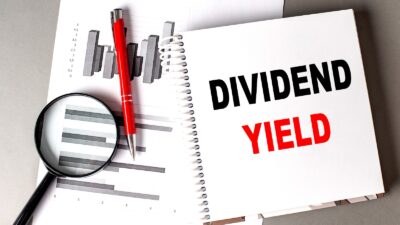One of the reasons I invest, like millions of other people around the world, is the possibility of earning passive income through dividends. But such payouts are never guaranteed,. They can be cut, for example because they are ‘not covered’. Sometimes, discussion of income shares talks about ‘dividend cover’.
Here I explain what dividend cover is — and why it matters.
Paying the bills
A helpful analogy is a farmer paying rent for a plot of land he uses to grow vegetables.
Should you invest £1,000 in National Grid right now?
When investing expert Mark Rogers has a stock tip, it can pay to listen. After all, the flagship Motley Fool Share Advisor newsletter he has run for nearly a decade has provided thousands of paying members with top stock recommendations from the UK and US markets. And right now, Mark thinks there are 6 standout stocks that investors should consider buying. Want to see if National Grid made the list?
The rent is the reward earned by the owner for letting the farmer use their field. Imagine that is £1,000 per year. If the farmer earns £2,000 from the crops they grow on the field, their rent is covered twice over.
But what if they only earn £500?
The rent is not covered. That does not necessarily mean they cannot pay it. But to do so, they will need to dip into other sources of money, like savings or the earnings from another field.
Earnings coverage
Normally when people talk about dividend cover, they are talking about how well the shareholder payout is covered by earnings – just like my example with the farmer above.
For example, last year’s National Grid (LSE: NG) dividend was covered 1.4 times by earnings. The power network operator reported adjusted earnings per share of 84p and the dividend per share was 58.5p.
But what if we look at basic earnings per share not adjusted ones? They were 60p per share, meaning National Grid barely covered its dividend.
Earnings are often not the same as cash flows
Why is there a difference between adjusted earnings and basic earnings?
There is a clue here to the bigger question: what are earnings?
Earnings are an accounting measure. So some things can show up in earnings that have not yet materialised as cash (and in some cases never will). Conversely, earnings may be reduced by items like depreciation, even though the last cash cost of the item being depreciated was decades ago.
A company like National Grid spends heavily on assets that are expected to last for decades. Last year, for example, it accounted for £521m of spending on depreciation and amortisation – but that does not mean it actually spent that amount on new assets during the year.
That is why as an investor I look at dividend cover by earnings, but also consider free cash flows.
Looking at free cash flows
In the earlier example, I said if the farmer “earned” £2,000 then £1,000 rent would be covered twice only. But earning £2,000 does not necessarily mean they hold £2,000 cash in their hands. Maybe they earn £2,000 by selling the crops from the field – but have to wait three months to receive the payment.
Earnings are an accounting measure. But cash flows show the hard, cold cash coming in the door or going out of it.
When it comes to dividend cover, that matters because ordinarily a company needs cash to pay dividends (unless shareholders elect to receive payment in more shares).
Last year, National Grid’s “total comprehensive income” was £1.9bn. But its free cash flows were £427m, after spending £1.7bn on dividends.
Those earnings and free cash flow numbers are miles apart. That is why I look at both when considering a share’s dividend cover.








